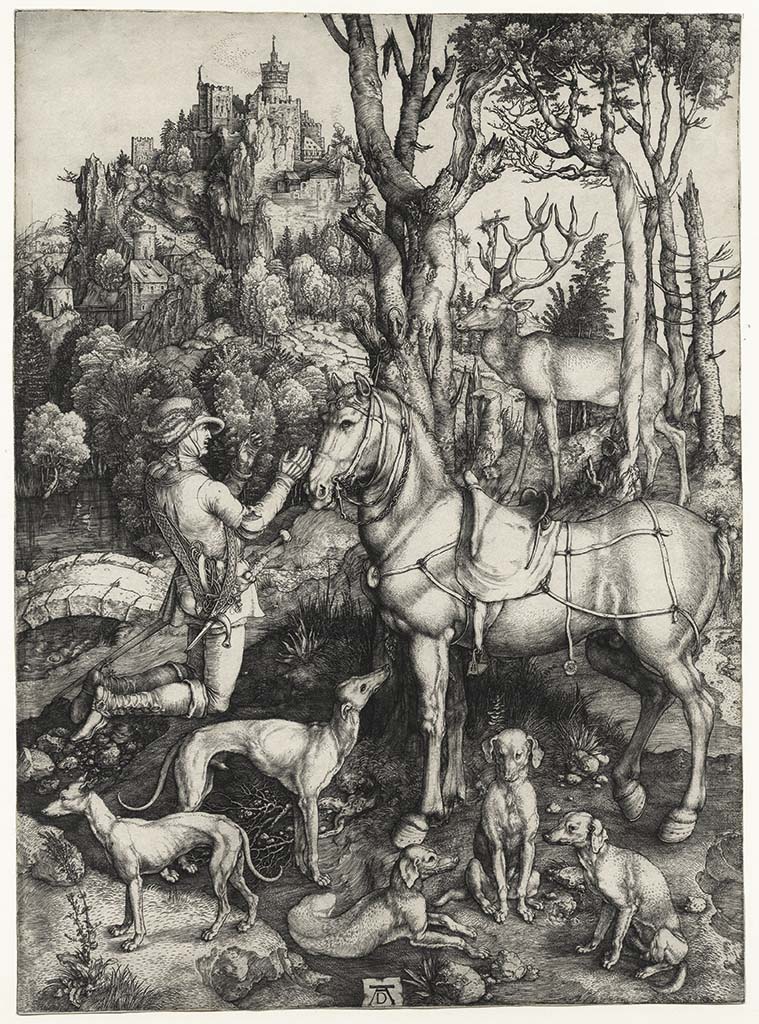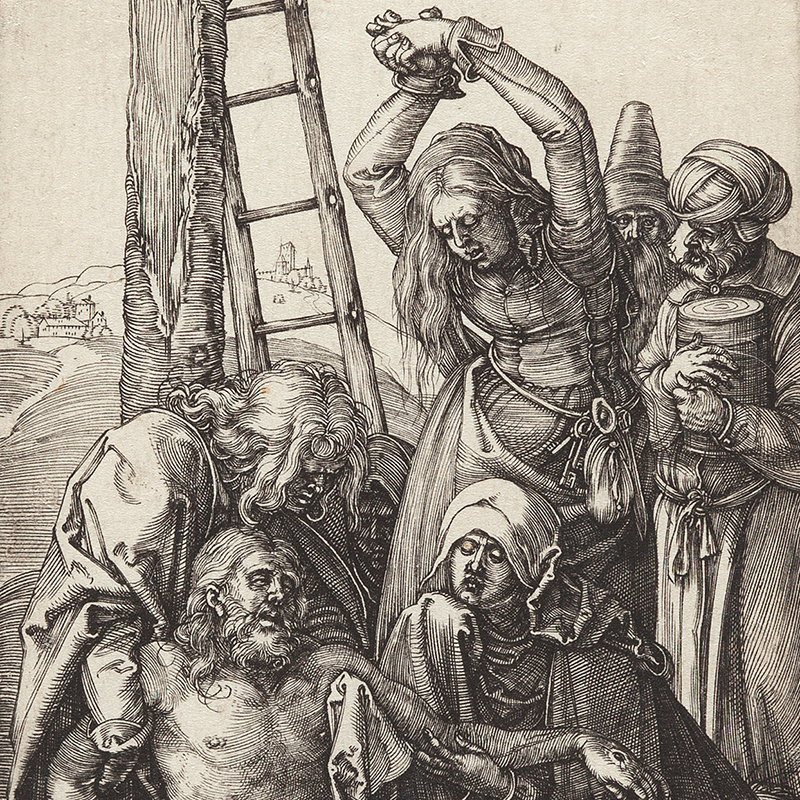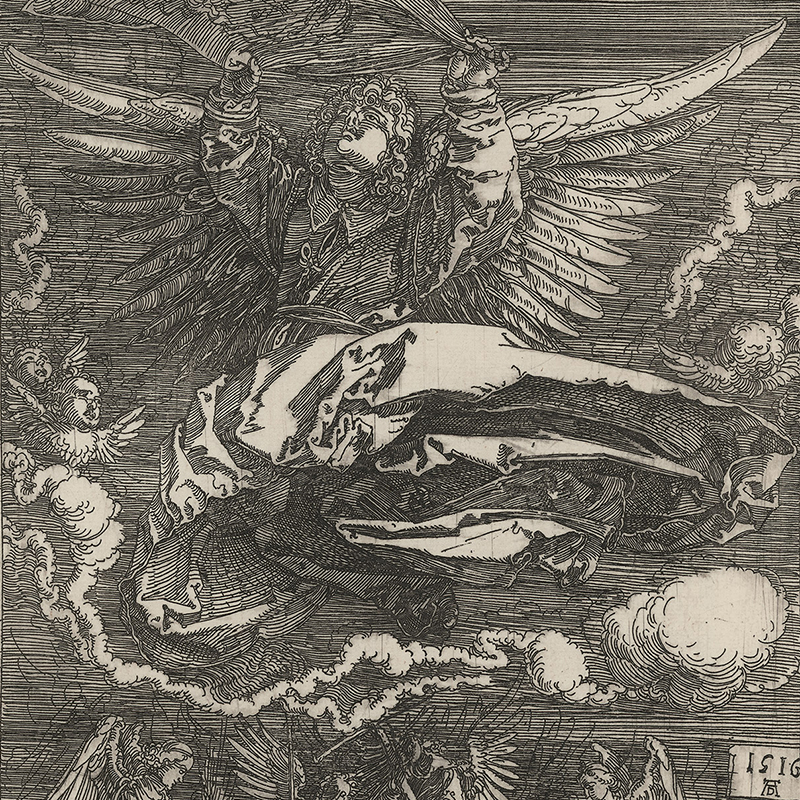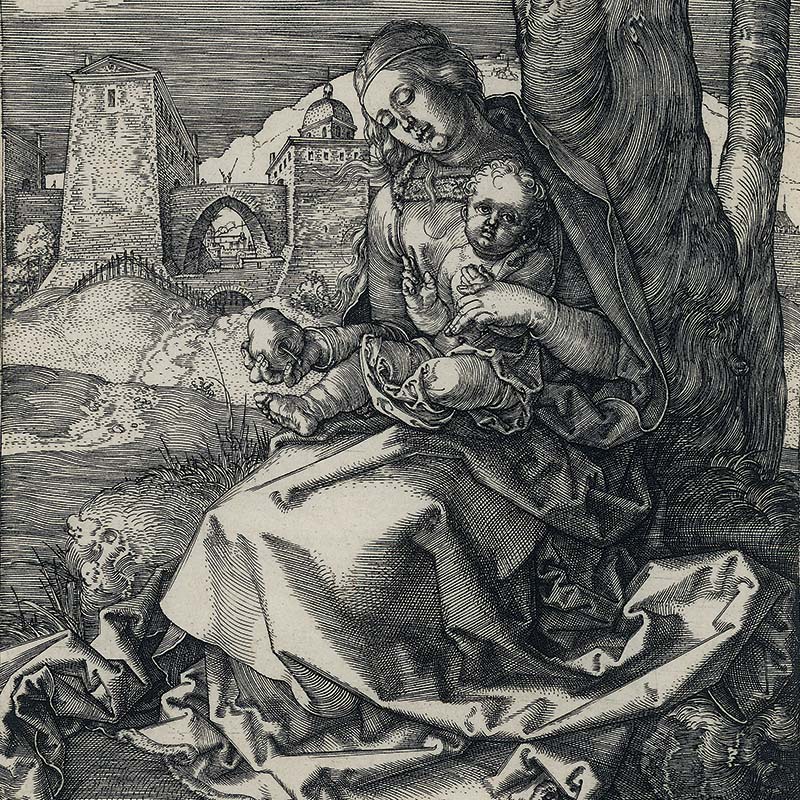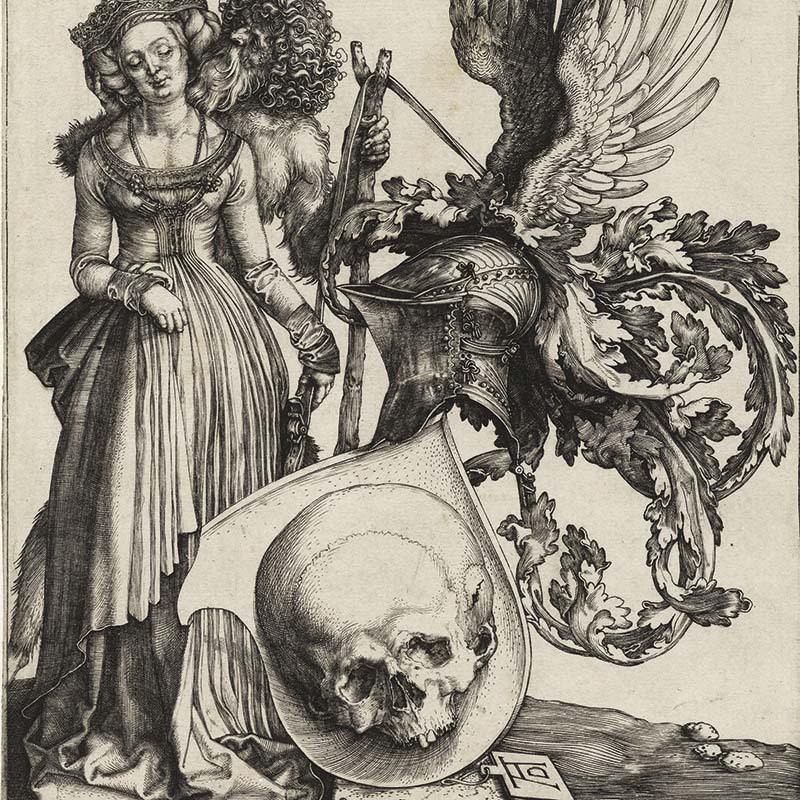Albrecht Dürer
Nuremberg 1471 -1528
1501
362 x 262 mm
Bartsch. 57; Meder 20 , Hollstein 60; Schoch Mende Scherbaum 32
This sheet is the artist's masterpiece.
Brilliant, high-contrast and deep black early impression with a fine burr under the bridge and in the area of the standing dogs, a print before the horizontal over the extreme left mountain contours, but with the short scratches in the saint's right arm and shoulder.
The large-format copper engraving is one of Dürer's main works and fine impressions are very rare. According to legend, Eustace was a Roman officer in the army of Emperor Trajan. While hunting, he was converted to christianity by meeting a stag with a crucifix in its antlers, and later he was martyred. As a hunting patron and one of the fourteen helpers in need, he was very popular at the end of the 15th century.
The engraving shows Dürer's mastery of the reproduction of natural forms in their various qualities at a high point. Every detail, whether close-up or distant, is treated with the same meticulousness, special attention is paid to the hunter's horse and five greyhounds.
Dürer particularly valued this sheet. As can be seen from his diary, on his journey to the Netherlands in the 1520s he still carried prints of Eustace with him to give away or sell, which he had already engraved around two decades earlier.
